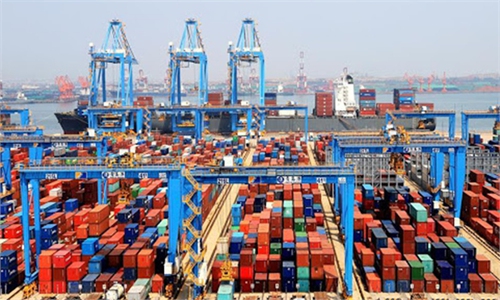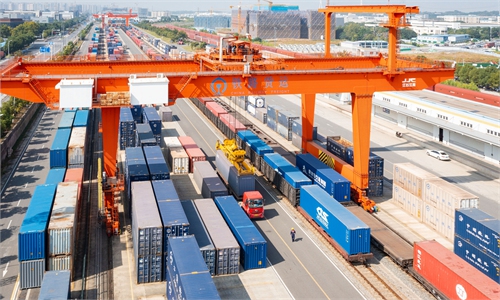
Lujiazui Photo:VCG
The sixth session of the 14th National People's Congress Standing Committee on Tuesday approved the issue of an additional 1 trillion yuan ($137 billion) in treasury bonds during the fourth quarter by the State Council, with a change in the country's fiscal deficit ratio, the Xinhua News Agency reported.Although the proceeds of the bonds approved this time will be transferred to local governments, the funds will be utilized to support post-disaster reconstruction, make up for weakness in disaster prevention and rescue mechanisms, and improve the country's overall resilience to natural disasters, instead of addressing local governments' debt risk.
The fact that the central government can prioritize the strengthening of the foundation of the Chinese economy shows that the risk of local government debt in China remains controllable.
If anything, the priority of risk prevention over risk mitigation is proof that the central government still has many tools to use and there is ample room for maneuver when it comes to various challenges. Just as China's current debt pressure is still manageable, Chinese policymakers' main consideration is still focused on how to maintain economic stability and promote high-quality growth.
But American and other Western media outlets have turned a blind eye to this reality, and have been playing up the so-called debt crises in China. For instance, the Wall Street Journal recently ran an article entitled "A financial crisis in China is no longer unthinkable," claiming that "the world's second-largest economy has a deflating property bubble, local governments are struggling to pay their debts and a banking system is heavily exposed to both." A Bloomberg report last week said that "China's local authorities are finding it more expensive to sell bonds, the latest sign of rising stress."
While such Western media reports focus on highlighting the concerns about China's debt problems, they cannot deny that the risk of a debt crisis happening to the Chinese economy is very slim. That's already enough to reflect the true picture of China's debt issues.
Managing the debt risk without triggering a financial crisis does present a challenge for the Chinese economy, as the debt issue may constitute a potential constraint on China's economic recovery. But it is misleading for some Western media outlets to play up the debt risk to create a new version of the "China collapse" cliche.
Indeed, the discussion of the government debt of any country needs to be based on the country's fiscal sustainability. As is known to all, the US federal debt has exceeded $33 trillion, which is equivalent to about 120 percent of its GDP, according to the US Office of Management and Budget. By comparison, China's government debt accounts for about 53 percent of its GDP, and the proportion is far lower than that of major economies such as the US and Japan.
In addition, this issuance of bonds is expected to widen China's 2023 budget deficit ratio to about 3.8 percent from 3 percent. While this level is internationally considered as the upper limit for annual fiscal deficits, it has often been surpassed by developed countries in recent years. The US deficit over the first 11 months of fiscal year 2023 increased to 5.7 percent of its GDP from about 3.8 percent one year earlier.
Given China's faster economic growth relative to that of developed countries and China's lower interest rates, the possibility of a debt-induced financial crisis in China is very low. In this sense, those who play up China's financial risks might as well worry about their own countries' debt pressure, instead of becoming people who live in glass houses and throw stones at others.



